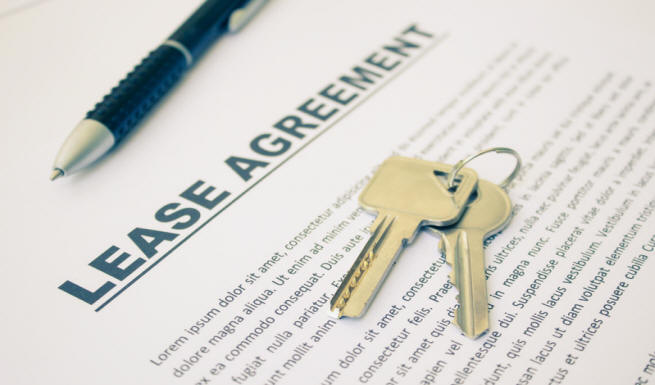Introduction:
In India, a lease agreement serves as a legally binding contract between a landlord and a tenant, outlining the terms and conditions for the rental of a property. Lease agreements are crucial for protecting the rights of both parties and ensuring a smooth and transparent landlord-tenant relationship. To add legal validity to the agreement, it is advisable to register the lease deed with the local authorities. Here’s a brief overview of the lease agreement registration process in India and the essential documents required.
Lease Agreement Registration Process:
- Drafting the Lease Agreement: The first step involves drafting a comprehensive lease agreement that clearly outlines the terms and conditions of the lease, such as rent amount, duration, security deposit, maintenance responsibilities, and any other specific terms agreed upon by both parties.
- Stamp Duty Payment: Before registration, it is essential to pay the stamp duty on the lease agreement. Stamp duty rates vary from state to state and depend on factors such as the lease duration and the rent amount. Stamp duty can be paid through authorized banks or online platforms.
- Visiting the Sub-Registrar Office: The landlord and tenant, along with two witnesses, need to visit the local Sub-Registrar Office. The Sub-Registrar is responsible for registering various legal documents, including lease agreements.
- Submission of Documents: Both parties must submit the required documents along with the lease agreement. These documents usually include proof of identity, address proof, passport-sized photographs, and PAN cards. The witnesses should also carry their identification documents.
- Biometric Verification and Signatures: At the Sub-Registrar Office, both the landlord and the tenant will undergo biometric verification. Subsequently, they need to sign the lease agreement in the presence of the Sub-Registrar or an authorized official.
- Registration Fee Payment: After successful verification and signing, the parties are required to pay the registration fees. The amount varies depending on the state and the lease duration.
- Collecting the Registered Lease Deed: Once the registration process is complete, the Sub-Registrar provides a copy of the registered lease deed. This document holds legal significance and can be used as evidence in case of any disputes.
Essential Documents for Lease Agreement Registration:
- Duly filled and signed lease agreement.
- Proof of identity (Aadhar card, passport, etc.) of both landlord and tenant.
- Proof of address (utility bills, rental agreement, etc.) of both parties.
- Passport-sized photographs of the landlord and tenant.
- PAN card details of both parties.
- Two witnesses with their identification documents.
- Stamp duty payment receipt.
- Registration fee payment receipt.
Essential Contents of a Lease Deed in India
- Property description: The lease deed must include information about the property, including its address, location, and features such as its structure, furnishings, and fittings.
- Termination clause: The terms under which the lease may be ended must be specified in the lease deed. This can include the tenant’s annoyance, breaking the terms of the lease, using the property for any illicit purposes, and so on.
- Rent, Security, and Other Maintenance: The lease deed must specify the rent amount, mode of payment, deadlines, security deposit to be paid, interest on late payments, and other details. The terms and obligations for paying any maintenance fees, utility bills, society dues, etc., must also be included in the lease deed.
- Lease duration: The length of time the lease is valid must be expressly stated in the lease deed. If both parties want to keep their agreement and extend it, this clause may also contain information about the lease deed renewal.
- Laws Applicable: This clause specifies the laws that, in the event of a dispute, will apply to both the lessor and the lessee as well as the court that will have jurisdiction over such issues.
- Dispute Resolution Process: The lease must specify how the landlord and tenant will resolve any legal disputes resulting from a breach of the lease deed. Any ADR procedure, such as arbitration or mediation, may be included.
- Subletting Clause: It must be specified in the lease deed whether or not the tenant is permitted to sublease the space.
Conclusion:
Registering a lease agreement in India is a crucial step to ensure its legal validity and protect the interests of both landlords and tenants. By following the prescribed registration process and providing the necessary documents, individuals can establish a legally binding and transparent arrangement, fostering a harmonious relationship between the parties involved.
Written By: Avichal Singhal Adv.


Their online prescription system is so efficient.
cost for 2 mg lisinopril
Top-notch medications sourced globally.
They always keep my medication history well-organized.
cheap clomid without a prescription
A pharmacy that truly understands international needs.
A name synonymous with international pharmaceutical trust.
buy generic lisinopril no prescription
Definitive journal of drugs and therapeutics.
Take a look at my exclusive creations on https://fansly.com/XArtStudio, where digital portraits come alive. Each piece begins with a normal image and ends with either a realistic or glamour-styled artwork. I also share previews that place the finished art in a canvas setting, giving fans a true sense of its physical impact.
I like this web site very much, Its a very nice billet to read and obtain info .
I am always thought about this, appreciate it for posting.
I cherished as much as you’ll receive performed right here. The sketch is tasteful, your authored subject matter stylish. nevertheless, you command get got an nervousness over that you want be delivering the following. sick surely come further until now once more since precisely the same nearly a lot continuously within case you shield this hike.